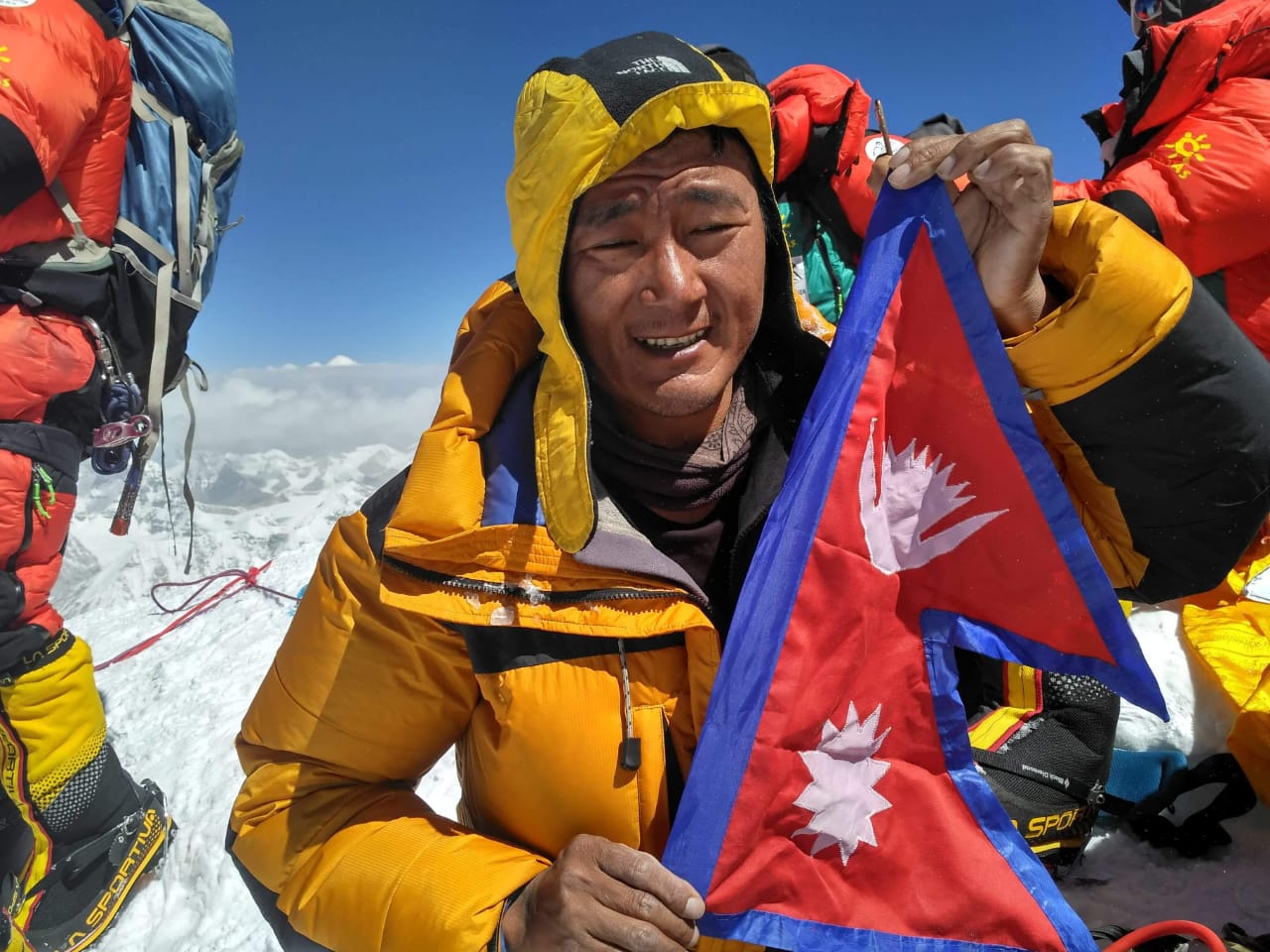Overview and Highlights
Everest Expedition 2023 from South face
A mountain expedition aka ‘The Everest Expedition’ to the world's highest peak, Mount Everest (8848.86 m), is one of the most intense, challenging, and thrilling experiences in the Himalayas. We can say amongst the Mountain climbing's this ‘Everest Expedition’ trek is the most challenging and intense one. Many experienced mountaineers have watched and have felt the sudden desire of getting on top of the highest peak.
Stated near the border with China, Mount Everest stands at 8848.86 meters high. Nepal has become a popular Everest climbing destination since Sir Edmund Hillary's first ascent because it is easier than the route from Tibet. Typically, the Everest region is inhabited by Sherpas, Tibetan Buddhists practising the ancient Tibetan Plateau civilization known as Bon Po.
Climbers heading to the Everest region take the flight to Lukla and walk for two days to Namche Bazar. Acclimatization takes place in Namche Bazar for the Everest climbers. During acclimatization, climbers trek up the southern side of Everest to Everest base camp, located at 5364 meters altitude.
It is presumed that your Everest Expedition 2023 trip would be a great success if you had enormous determination, discipline, and courage to climb Everest. In addition, you should have mountaineering experience, significantly above 6000 meters. In the face of adventures, it is never wise to go unprepared. Before embarking on an Everest expedition in 2023, those who dream of achieving such an accomplishment need to prepare well and be determined.
What preparation is needed for the Everest expedition 2023? It is essential to have the right gear to be comfortable and successful. Only a true adventurer can undertake the Mt. Everest expedition. Depending on your physical, mental, and financial abilities, you might want to consider such a challenge. We also offer trips to Everest Base Camp and Gokyo Lake Everest Base Camp if you're going to experience the big trekking expeditions in the Everest Himalayas.
Everest Expedition 2023, with Actual Adventure starts from both from the north and south via the Khumbu Valley in Nepal.
The Responsibility and Sustainability of Expeditions, a taken responsibility by Actual Adventures
It is no secret that our mountains are filled with vast amounts of waste. Despite long-standing neglect, we are deeply concerned about this issue. Thus, to address this issue head-on, we, Actual Adventure plan to move the expedition waste (mostly in high camps) down from them. The high altitude porters we have in our team will be responsible for transporting our waste.
The collected waste shall be sealed and transferred to an appropriate dumpsite in the valley via a yak. When operating expedition operations within our mountains, we feel we have a moral responsibility to protect them and keep them clean for future generations. There’s a concern for our mountains being overly polluted and the waste left/ignored in the mountains. Everyone should be rightly concerned. Due to our commitment to our sustainable values and implementation implement these tactics and program.
Everest expedition strategy adopted by Actual Adventure for 2023
CAMP 1: 20000FT. (6,400M)
Camp 1 is situated at a flat area where deep crevasses and mountains walls are endlessly snow-covered. At this place, we are treated to a warm and heating ambience from the reflection of the Sun. Our tent is filled with the deep murmuring crackling sound of crevasses at night. We have to cross these areas to get to camp 2.
CAMP 2. 21000FT. (6,750M)
At the height of 21000ft, camp 2 is located next to the icy mount Lhotse wall, through which we must pass to reach it. As we are at the foot of camp 2, bad clouds roll in from the low ranges of the Himalayan valleys. Yet sometimes, the wind here is so violent that our tents are torn apart. Our third camp lies below these palaces.
CAMP 3. 22300FT
This wall is adjacent to the Lhotse wall. Upon reaching 4000 feet. Using fixed ropes and after acclimatization, we go camp 4 by using the Lhotse wall. Additionally, we must ascend the cliff bands (loose, down-sloping, and crumbling limestone). As they cross the short snowfield, the route continues up the Geneva Spur to the east and then finishes on the flats of the Saddle of Pass (another wells name). If climbers need oxygen above base camp 3, oxygen should probably be available.
CAMP 4. 26000FT. (8,400M)
The last camp of the expedition is situated at the height of 26000ft; it is the fourth camp of the expedition. A distance of 500m separates this camp from the summit. The final climb poses the greatest danger. Violent and fierce winds besiege this place. South-East Ridge and South Summit (28710ft) are the best routes to reach the summit.
Everest Expedition 2023 ITINERARY:
01 Apr: Day 01: Arrival in Kathmandu and Transfer to hotel.
02-03 Apr: Day 02-03: Preparation, briefings, shopping and formalities for permit.
04 Apr: Day 04:Fly to Lukla and Trek to Phakding (2652m-4 Hrs.); lodge.
04 Apr: Day 05: Trek to Namche Bazaar (3440m-6 Hrs.); Lodge.
06 Apr: Day 06:Rest & acclimatization, explore Everest View Hotel (3800m-3 Hrs.).
07 Apr: Day 07: Trek to Tyangboche (3850m-5 Hrs.); Explore Buddhist monastery; lodge.
08 Apr: Day 08: Trek to Dingboche (4350m-5Hrs.); lodge.
09 Apr: Day 09: Trek to Lobuche (5018m-4Hrs.); lodge.
10 Apr: Day 10: Rest for acclimatization at Lobuche.
11 Apr: Day 11: Trek to Gorakshep (5170m-3 Hrs.); lodge.
12 Apr: Day 12: Trek to Everest Base camp (5200m-2 Hrs.), Camping.
13 Apr-26 May: Day 13-56: Climbing period Summit Everest (8,848.86m), full camping.
27 May: Day57: Down trek to Gorakshep, overnight lodge.
28 May: Day 58: Trek via Lobuche (5218m)to Dingboche(4260m-5 Hrs.), lodge.
29 May: Day 59: Trek to Tyangboche (3860m-5 Hrs.), lodge.
30 May: Day 60: Trek to Namche Bazaar (3440m-4 Hrs.), lodge.
31 May: Day 61: Trek to Lukla (2840m-7 Hrs.).
01 June: Day 62: Fly from Lukla to Kathmandu; hotel transfer, D-briefing.
02 June: Day 63: Contingency Day in Kathmandu, Farewell-Celebration dinner.
03 June: Day 64: Transfer to the airport for final departure, end of the trip.
 Actual Adventure Pvt. Ltd.
Actual Adventure Pvt. Ltd. Actual Adventure Pvt. Ltd.
Actual Adventure Pvt. Ltd. 

















